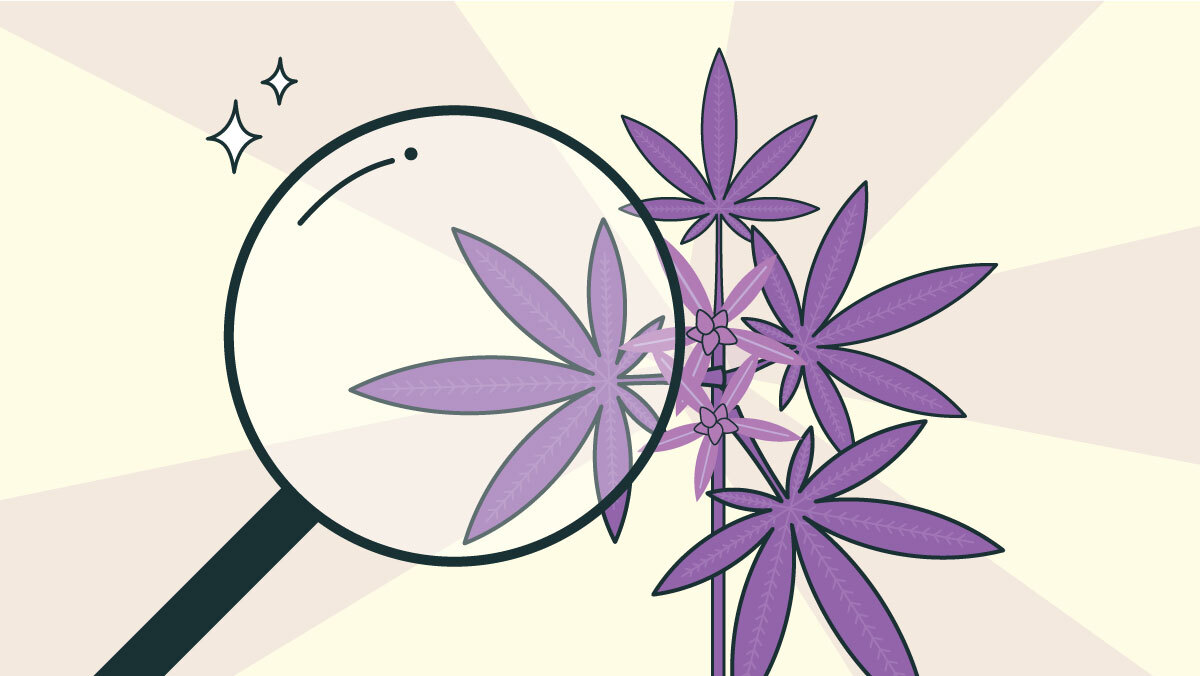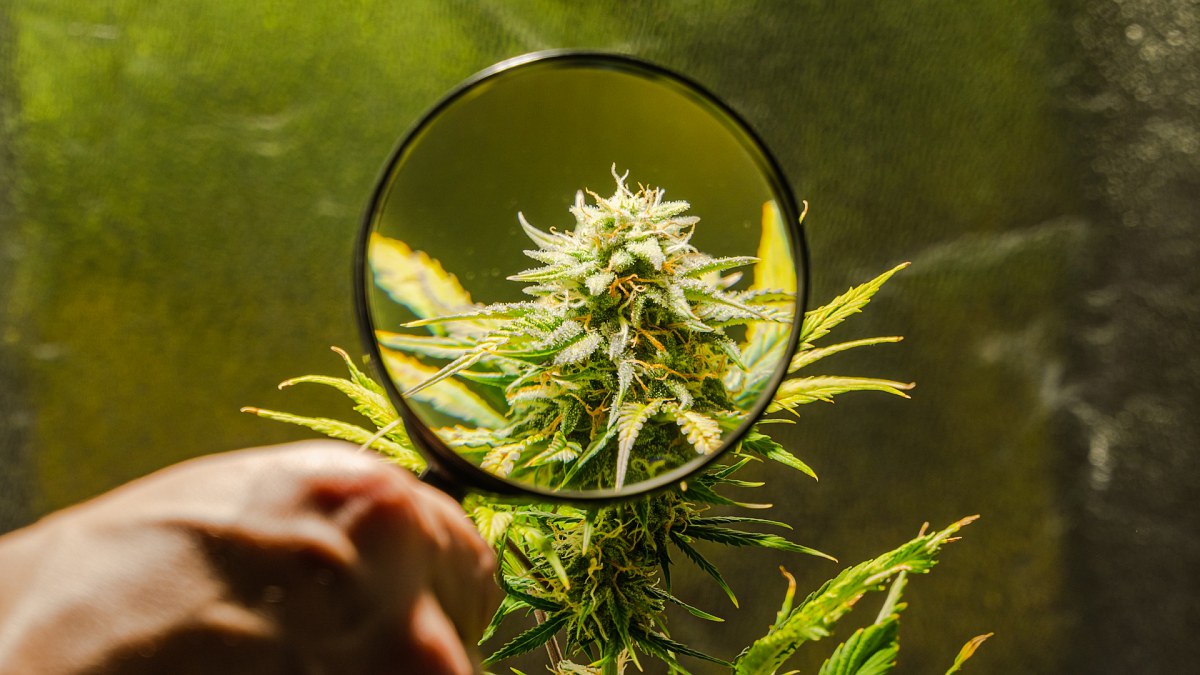What is the Half-Life of THC?

One question is likely to dominate weed smokers’ thoughts, as soon as they learn they’re going to have to take a drug test.
“Is there any way I can get out of this?”
After they’ve stopped fantasizing, though, a more important and realistic question quickly comes to mind: “How long does weed stay in my body?”
Unfortunately, there’s no “right” answer to that question. Everyone’s body acts differently, so there’s no way to be certain when THC and its metabolites will be flushed from a user’s system.
The general rules of thumb are that occasional users will probably be in the clear after a few days, those who smoke several times a week may have traces in their system for anywhere between seven and 21 days, and heavy users can test positive for a month or even longer. But a person’s metabolism, weight, and several other factors can shorten or lengthen those time frames.
If the panicked weed user thinks back to high school science class, however, they may not be looking for general benchmarks. They’re more likely to ask “What is the half-life of THC?”
That’s an interesting question, even though the answer doesn’t really tell them how long traces of the cannabinoid will be detectable in their urine. (Almost all THC tests are urine tests.)
Here’s the way they should look at their drug test “problem.”
The Half-Life of THC

Let’s first define what we’re talking about. The half-life of a drug is simply the length of time it takes for one-half of it to be eliminated from the body. So if a substance has a half-life of one day, that means 50% of it will be gone by the start of day two.
This is important, though: a half-life of one day doesn’t mean that all of the substance will be gone in two days. Each day, the remaining amount is only reduced by one-half of what’s left. So after the second day, 75% of it (50% + 25%) will have been eliminated from the body. After the third day, 87.5% (50% + 25% + 12.5%) will be gone, and so on.
Now, let’s talk more specifically about weed and the psychoactive cannabinoid THC.
After THC enters the body, it’s quickly broken down by the liver into dozens of similar compounds called metabolites. Only 10%-20% of the THC in weed remains after that process, and it clears the body quickly. It’s just about gone in 24 hours, and often much faster than that.
So knowing the half-life of THC isn’t really a big deal – especially since THC itself doesn’t show up on a urine test. Only blood tests and saliva tests check for THC.
What matters more is the half-life of THC’s metabolites.
What Happens Once the Liver Breaks Down THC?
Two of the metabolites created from THC have major roles to play in this drama.
The first is called 11-OH-THC (or 11-hydroxy-THC). It’s almost as psychoactive as its parent THC, but it doesn’t stick around for long, either. Its half-life is shorter than one day – and the body quickly converts most of it into yet another metabolite, THC-COOH. That’s the one that we need to focus on.
THC-COOH is an inactive compound, so it doesn’t make you high. It’s also not water-soluble, so it’s not cleared quickly via urine. Instead, THC-COOH is stored in accumulated body fat.
Here’s why that’s important. We’ve mentioned that urine blood tests don’t detect THC. They actually look for traces of THC-COOH. And THC-COOH is in no hurry to be excreted; the metabolite only leaves the body when the fat that’s storing it is burned. In other words, THC-COOH hangs around for days, weeks or even longer after someone smokes or consumes weed. It stays in the user’s system – and can show up on a urine test – for a long, long time.
The Half-Life of THC-COOH
This discussion so far would imply that the half-life of THC-COOH is what really matters, rather than the half-life of THC. That’s true – sort of. But let’s start there.
The half-life of THC-COOH has been estimated to be somewhere between five and six days. So 25% of the metabolite is still in the body ten days later, and 12.5% remains in the body after 20 days.
That fact might seem odd at first. Why do occasional users usually test negative after a few days, if at least 25% of the THC-COOH stays in their fat much longer than that? It’s because tests aren’t designed to go “tilt” when there’s any THC-COOH in the urine. They only return a positive result when the metabolite’s level exceeds a certain threshold.
Someone who only takes a few hits on a joint and then doesn’t smoke again for a week isn’t putting much THC into their system, so there won’t be very much THC-COOH for their body to store in fat cells. Even less of the metabolite will be left after a few days, and it won’t be enough to register positive on a urine test.
But the story’s different for a regular, heavy smoker. They keep adding more THC-COOH to their stored fat every time they toke up.
A heavy smoker’s first smoke sesh might not cause them to test dirty a week later; the half-life of the metabolite from that first bowl is relatively short. However, as they keep smoking, they keep accumulating THC-COOH in their body. The end result: it can be weeks after a stoner stops smoking, before enough THC-COOH has been eliminated to let them test clean.
The bottom line is simple. The half-life of THC doesn’t really matter when you’re worried about passing a drug test. The half-life of THC-COOH has more of an effect – but the real concern is how much weed someone has consumed over the month or so before the test.
There’s no way to say exactly when a heavy smoker is home-free. In addition to how much and how often they smoke, other factors play a major role. They include:
- The THC content of the weed they’ve smoked.
- Their metabolism; those with a high metabolism will burn fat that contains THC-COH more quickly.
- Their THC tolerance.
- Their weight and body mass index; those with more body fat usually store THC-COOH for longer periods of time.
So now you have an idea about the half-life of THC – and the half-life of THC-COOH. And you also know why that information isn’t very helpful if you’re faced with a drug test. Crunching numbers really won’t help. Your first step should be to stop smoking immediately, and if you can, find a way to delay the test as long as possible.
What Is the Half-Life of THC: FAQ
Q: If I may be facing a drug test in the near future, should I only use strains with lower THC content?
A: That can’t hurt, but it won’t make a real difference unless you’re switching to a strain that’s almost all CBD and almost no THC. How much and how often you smoke are the factors that will most likely determine whether you test positive.
Q: Do different strains have different THC half-lives?
A: No. They contain different levels of THC, but the THC that’s in them will have the “same half-life.” Besides, you know after reading this article that worrying about THC’s half-life won’t do you much good.
Q: Does this information also apply to hair tests for weed?
A: Hair tests can determine cannabis dating back as far back as 2-3 months, so it’s almost impossible to “wait out” the test for a week or two. There’s good news, though: hair tests are quite expensive, so very few employers or government agencies use them.
Reference:
Sharma, P., Murthy, P., & Bharath, M. S. (2012). Chemistry, metabolism, and toxicology of cannabis: clinical implications. Iranian Journal of Psychiatry, 7(4), 149. [1]